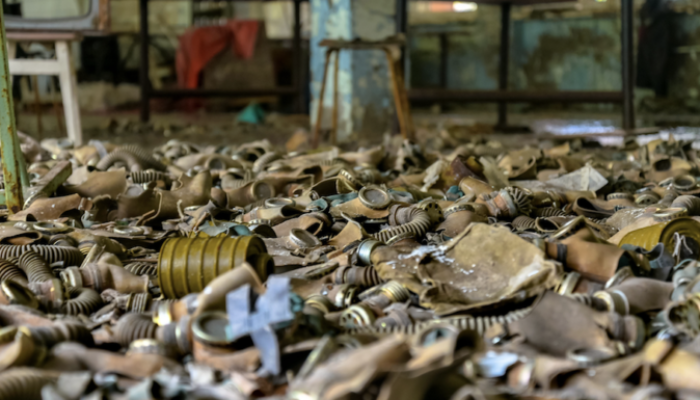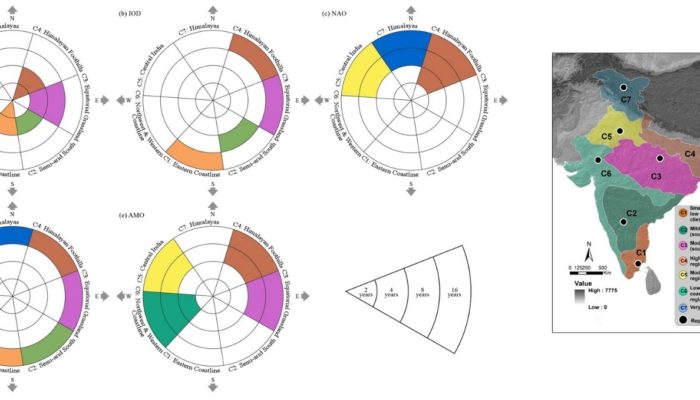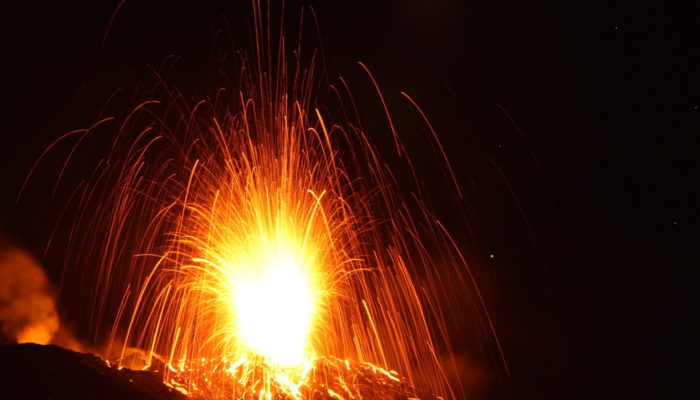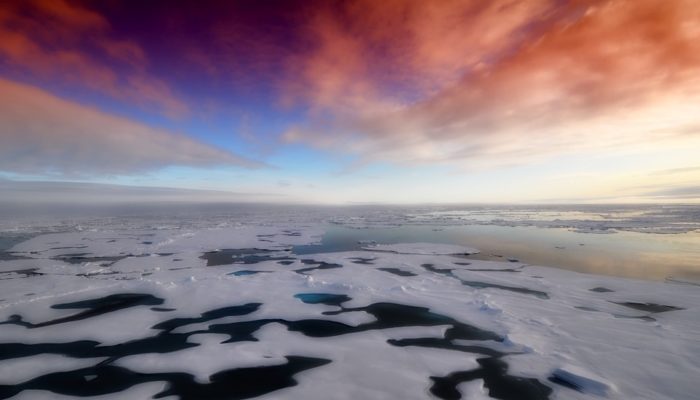For months, students have skipped school on Fridays to ask for more action against climate change. To kick off the Global Week for Future, last Friday saw thousands of demonstrations in many countries around the globe, with not only high school students joining the fray, but people from all walks of life. GFZ Potsdam’s Bernhard Steinberger and Thilo Wrona share their experiences in Potsdam and Ber ...[Read More]
Cryospheric Sciences
Climate Change & Cryosphere – Summer 2019: The year that the Arctic was sunburned
June, July and August 2019 saw extensive heat waves across Europe, with air temperatures reaching above 40°C in many countries. In response, record breaking ice melt was observed in Greenland and wildfires in Siberia, Alaska, Arctic Canada and Greenland occurred. A particularly dry and warm summer was responsible for hemisphere-wide changes to the cryosphere. In this week’s post, we will review so ...[Read More]
Atmospheric Sciences
A simple model of convection to study the atmospheric surface layer
Since being immortalised in Hollywood film, “the butterfly effect” has become a commonplace concept, despite its obscure origins. Its name derives from an object known as the Lorenz attractor, which has the form of a pair of butterfly wings (Fig. 1). It is a portrait of chaos, the underlying principle hindering long-term weather prediction: just a small change in initial conditions leads to vastly ...[Read More]
Geodynamics
The Sassy Scientist – Earthquake Exoteries Nr. I
Every week, The Sassy Scientist answers a question on geodynamics, related topics, academic life, the universe or anything in between with a healthy dose of sarcasm. Do you have a question for The Sassy Scientist? Submit your question here or leave a comment below. In a comment on a post about the key papers in geodynamics, the Curmudgeonly Commenter asked: Could you please point out some exceptio ...[Read More]
Nonlinear Processes in Geosciences
NPG Paper of the Month: “Unravelling the spatial diversity of Indian precipitation teleconnections via a non-linear multi-scale approach”
Today’s we launch one of our promised activities: the NPG Paper of the Month. This month the award is achieved by Jürgen Kurths and co-authors for their paper “Unravelling the spatial diversity of Indian precipitation teleconnections via a non-linear multi-scale approach” (https://www.nonlin-processes-geophys.net/26/251/2019/). Ankit Agarwal, one of the authors of the manuscript, tells ...[Read More]
Geodynamics
Writing the Methods Section
An important part of science is to share your results in the form of papers. Perhaps, even more important is to make those results understandable and reproducible in the Methods section. This week, Adina E. Pusok, Postdoctoral Researcher at the Department of Earth Sciences, University of Oxford, shares some very helpful tips for writing the Methods in a concise, efficient, and complete way. Writin ...[Read More]
Natural Hazards
Stromboli: The Lighthouse of the Mediterranean
In the last months two paroxysmal explosive eruptions took place at Stromboli volcano: the first one, totally unexpected, on 3rd July (Video 1) that sadly cost the life of a person and the second and, currently, last one about three weeks ago, on the 28th August (Video 2). Today we try to answer a couple of questions about Stromboli and its eruptions. Are these paroxysmal eruptions common or rare ...[Read More]
Geochemistry, Mineralogy, Petrology & Volcanology
#mineralmonday: tiptopite
#mineralmonday: your weekly* dose of obscure mineralogy, every Monday** [*not guaranteed; **or possibly Tuesday-Sunday] What is it? Tiptopite: K2Na1.5Ca0.5Li3Be6(PO4)6(OH)2•(H2O) What’s it made of? Take a deep breath and recite after me: potassium, sodium, calcium, lithium, beryllium, phosphorus, oxygen and water (H2O). Is it pretty? Yes, it’s a beautiful fibrous mineral. You wouldn&# ...[Read More]
Cryospheric Sciences
Climate Change & Cryosphere – Why is the Arctic sea-ice cover retreating?
The Arctic Ocean surface is darkening as its sea-ice cover is shrinking. The exact processes driving the ongoing sea-ice loss are far from being totally understood. In this post, we will investigate the different causes of the recent retreat of the Arctic sea-ice cover, using the most updated literature… Arctic sea ice is disappearing Due to its geographical position centered around the Nort ...[Read More]
Geodynamics
The Sassy Scientist – Pluto Panic
Every week, The Sassy Scientist answers a question on geodynamics, related topics, academic life, the universe or anything in between with a healthy dose of sarcasm. Do you have a question for The Sassy Scientist? Submit your question here or leave a comment below. After a distraught period (of more than a decade!) since the news first came out that Pluto was not considered a true planet anymore, ...[Read More]









